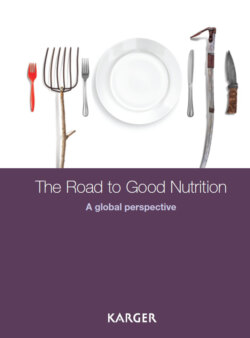Читать книгу The Road to Good Nutrition - Группа авторов - Страница 126
На сайте Литреса книга снята с продажи.
The UNICEF conceptual framework
ОглавлениеMore than two decades ago, UNICEF developed a conceptual framework that identifies the causes of undernutrition. The nutrition community has used it extensively ever since because it provides a useful visualization of the multiple factors that affect maternal and child undernutrition. The framework is particularly useful to illustrate the different levels of factors that affect nutrition - for example factors at the national, community, household and individual levels - and refers to basic, underlying and direct determinants of undernutrition. Some variations of the models also show examples of interventions that can be used to address some of the determinants of undernutrition at these different levels.
The UNICEF conceptual framework is as relevant today as it was then, but it is now influenced by recent shifts and exciting developments in the field of nutrition.
Strengthened by new evidence, an understanding of the short- and long-term consequences of undernutrition has evolved. There is even stronger confirmation that undernutrition can trap children, families, communities and nations in an intergenerational cycle of poor nutrition, illness and poverty. More is known about the mechanisms that link inadequate growth due to nutritional deficiencies before the age of 2 with impaired brain development and subsequent reduced performance in school. And there is clearer, more comprehensive evidence of the need to promote optimal growth during this critical period to avoid an elevated risk of non-communicable diseases, such as cardiovascular disease, in adulthood and even in the next generation.
The UNICEF conceptual framework defines nutrition and captures the multifactorial causality of undernutrition (Figure 1). Nutritional status is influenced by three broad factors: food, health and care. Optimal nutritional status results when children have access to affordable, diverse, nutrient-rich food; appropriate maternal and child-care practices; adequate health services; and a healthy environment including safe water, sanitation and good hygiene practices. These factors directly influence nutrient intake and the presence of disease. The interaction between undernutrition and infection creates a potentially lethal cycle of worsening illness and deteriorating nutritional status.
Food, health and care are affected by social, economic and political factors. The combination and relative importance of these factors differ from country to country.
Understanding the immediate and underlying causes of undernutrition in a given context is critical to delivering appropriate, effective and sustainable solutions and adequately meeting the needs of the most vulnerable people.
